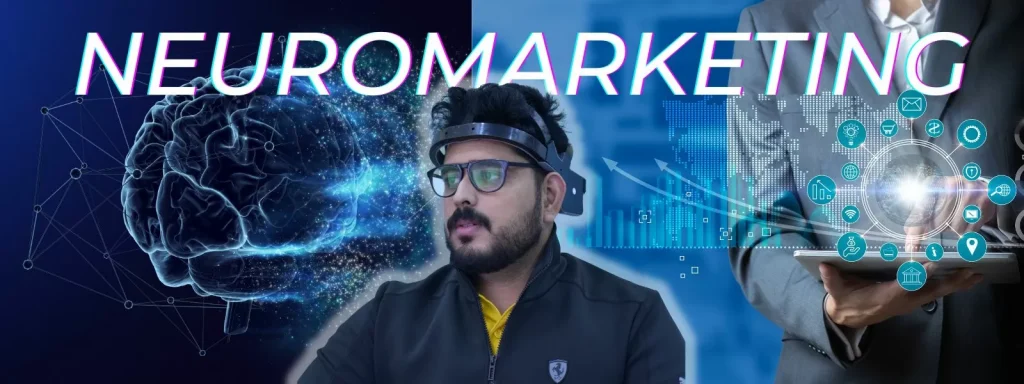Blogs >> NeuroMarketing – The Modern Marketing Trends & Neuroscience

Introduction to Neuromarketing with EEG
Neuromarketing is an emerging field that has the potential to revolutionize how businesses market their products and services. It combines neuroscience and marketing to provide deeper insights into consumer behavior and preferences. Neurotech start-ups like “Neuphony” are playing a critical role in advancing this field by introducing innovative technologies and strategies that help them better understand and target their audiences to provide the best value for the best possible price.
Neuromarketing uses functional magnetic resonance imaging (fMRI) or electroencephalogram (EEG) to observe the brain activity of consumers while they interact with products and services.
How does Neuromarketing work?
In Neuphony we use EEG and concepts like “Arousal & Valence”. This allows us to gain a more detailed and accurate understanding of our target audience’s buying behavior.
Arousal and Valence are two important concepts in neuromarketing that measure how people respond emotionally to a product or advertisement. Arousal is a measure of how excited or stimulated a person feels while viewing an advertisement or product. It is typically measured on a scale from low to high.
Arousal in Neuromarketing
Arousal is a measure of how activated or stimulated an emotion is. It reflects the intensity of the emotional experience. High-arousal emotions are those that come with a strong sense of excitement, such as joy, anger, or fear. These emotions are usually accompanied by physical sensations such as a racing heart or butterflies in the stomach. Low-arousal emotions are those that are more subdued and calmer, such as contentment or sadness.
Valence in Neuromarketing
Valence is a measure of the overall positive or negative sentiment associated with the advertisement or product. Valence is a measure of the emotional quality of an emotion, as it reflects whether it is positive or negative.
To calculate Valence the hypothesis of asymmetrical frontal activity is used. According to that when left frontal inactivation occurs it might be linked to negative emotions, whereas inactivation of right frontal region may be linked to positive emotions.
Positive valence reflects emotions that are pleasant and enjoyable, such as joy or love. Negative valence reflects emotions that are unpleasant and aversive, such as anger or fear. Both arousal and valence are important indicators of how people react to a product or advertisement, and can be used to create more effective marketing messages.
Neuromarketing with Neuphony
Neurotech start-ups like Neuphony are leveraging this technology to provide insights into consumer preferences, motivations, and emotions. This data can help companies create more effective marketing campaigns and develop more targeted products and services. Neurotech start-ups are also exploring how artificial intelligence (AI) can be used in neuromarketing. AI can be used to analyze the data gathered from fMRI or EEG and produce detailed profiles of users. This information can be used to create more personalized and effective marketing strategies. Additionally, AI can be used to automate the process of gathering and analyzing consumer data, allowing businesses to quickly identify trends and optimize their marketing efforts.

This(fig. 1) is an example graph of how “Neuphony” can be used for neuromarketing. Here we can take 30th Epoch and Score value of 0 as midline for X and Y axis respectively. When we divide the continuous segments from 30th epoch we get 2 phases in the graph.
Arousal: We can see that the value of arousal never went on negative side which indicates that the stimulus had given high emotional state to the audience (e.g. Excitement, Anger) for the entire duration. But in the ‘Phase 2’ we can see the arousal dropping towards 0 showing the initial emotional state has started to wear off.
Valence: Here we can notice that during ‘Phase 1’ the quality of mood was neutral because of its almost constant 0 value. During ‘phase 2’ we notice significant drop toward negative values. This indicates the negative emotion (e.g. Sadness).
To summarize the graph, the stimulus given to audience made them interested during ‘phase 1’ and their mood stayed neutral means there was neither anger nor excitement mixed with that interest. In ‘phase 2’, the interest started to go down along with negative emotional state obtained from valence. This shows low mood such as boredom or sadness.
These metrics are then used to analyse how our brain behaves while looking at different content, and how this information can be used to make content more engaging for the customers.

